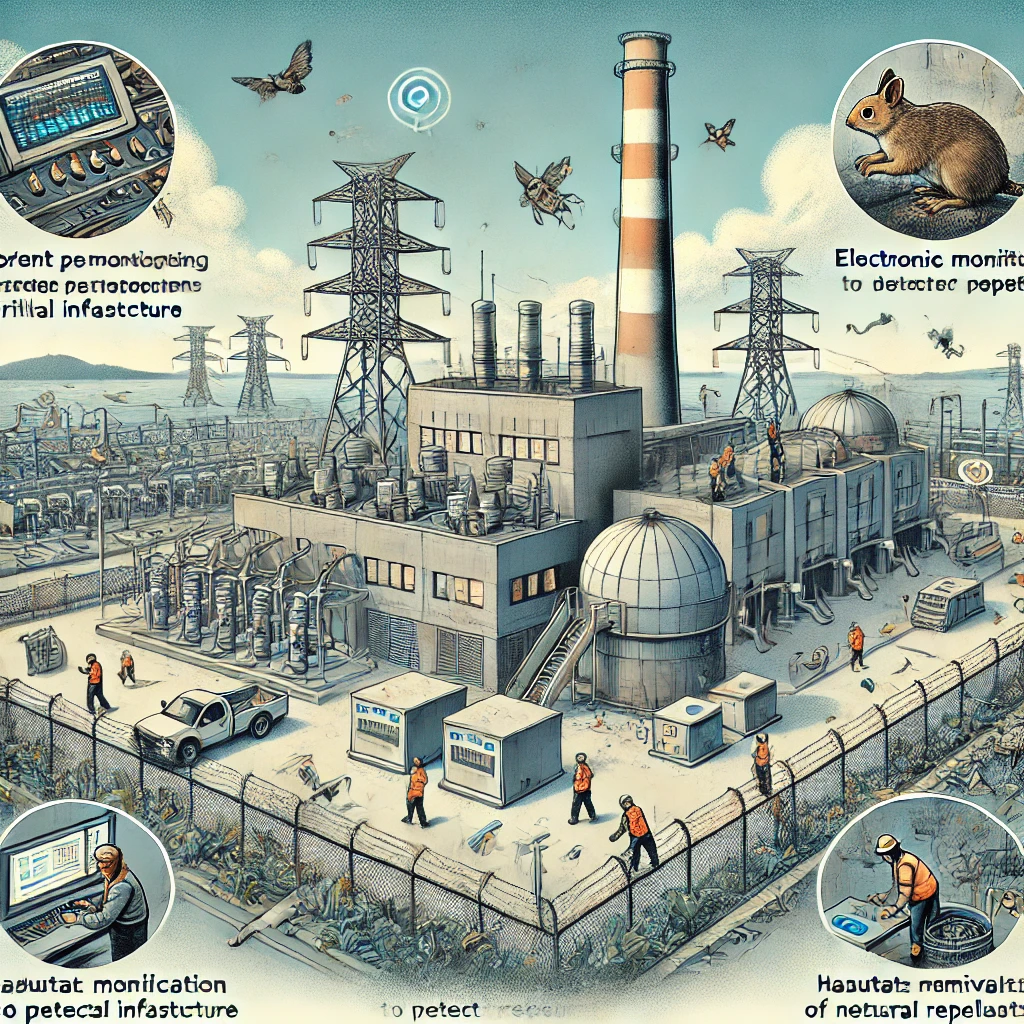
Introduction to Pest Control in Energy Production Facilities
Pest control in energy production facilities is crucial for maintaining the integrity and safety of critical infrastructure. These facilities, which include power plants, substations, and renewable energy sites, play a vital role in providing electricity and energy to communities. However, pests such as rodents, insects, and birds can pose significant threats by damaging equipment, causing power outages, and increasing the risk of fires. Effective pest management in these environments is essential to ensure the continuous and safe operation of energy production facilities.
Impact of Pests on Energy Infrastructure
Pests can cause various problems in energy production facilities, ranging from physical damage to equipment to disruptions in service. Rodents, for example, are known to chew through electrical wiring, which can lead to short circuits and even fires. Birds nesting in substations can interfere with electrical components, leading to power outages and increased maintenance costs. Insects like ants can infest sensitive areas, such as control rooms and electronic equipment, causing malfunctions. These issues not only jeopardize the reliability of energy supply but also pose safety hazards to personnel and the surrounding community.
Pest Management Strategies for Energy Facilities
Effective pest management strategies in energy production facilities involve a combination of preventative measures and targeted interventions. Physical barriers, such as rodent-proof fencing and bird netting, can help prevent pests from entering critical areas. Regular inspections and monitoring are crucial for early detection of pest activity, allowing for prompt action before significant damage occurs. Chemical treatments, such as rodenticides and insecticides, may be used selectively in non-sensitive areas to control pest populations. Additionally, habitat modification, such as removing food sources and nesting sites, can reduce the attractiveness of the facility to pests.
Challenges in Implementing Pest Control in Energy Facilities
Implementing pest control in energy production facilities presents several challenges. These facilities often have strict safety regulations that limit the use of certain pest control methods, particularly chemicals that could interfere with equipment or pose risks to personnel. Additionally, the large size and complexity of these sites make it difficult to monitor and control pests effectively. Pest control measures must also be tailored to the specific needs of each facility, considering factors such as the type of energy produced, local pest populations, and environmental conditions.
Future Directions in Pest Control for Critical Infrastructure
The future of pest control in energy production facilities will likely involve increased use of technology and sustainable practices. Innovations such as electronic monitoring systems, which use sensors to detect pest activity and send alerts to management, can enhance early detection and response. Integrated Pest Management (IPM) approaches that combine physical, biological, and chemical controls in a strategic manner will continue to be a priority. Furthermore, ongoing research into environmentally friendly pest control methods, such as natural repellents and biopesticides, will help minimize the impact on the environment while effectively managing pest populations.
